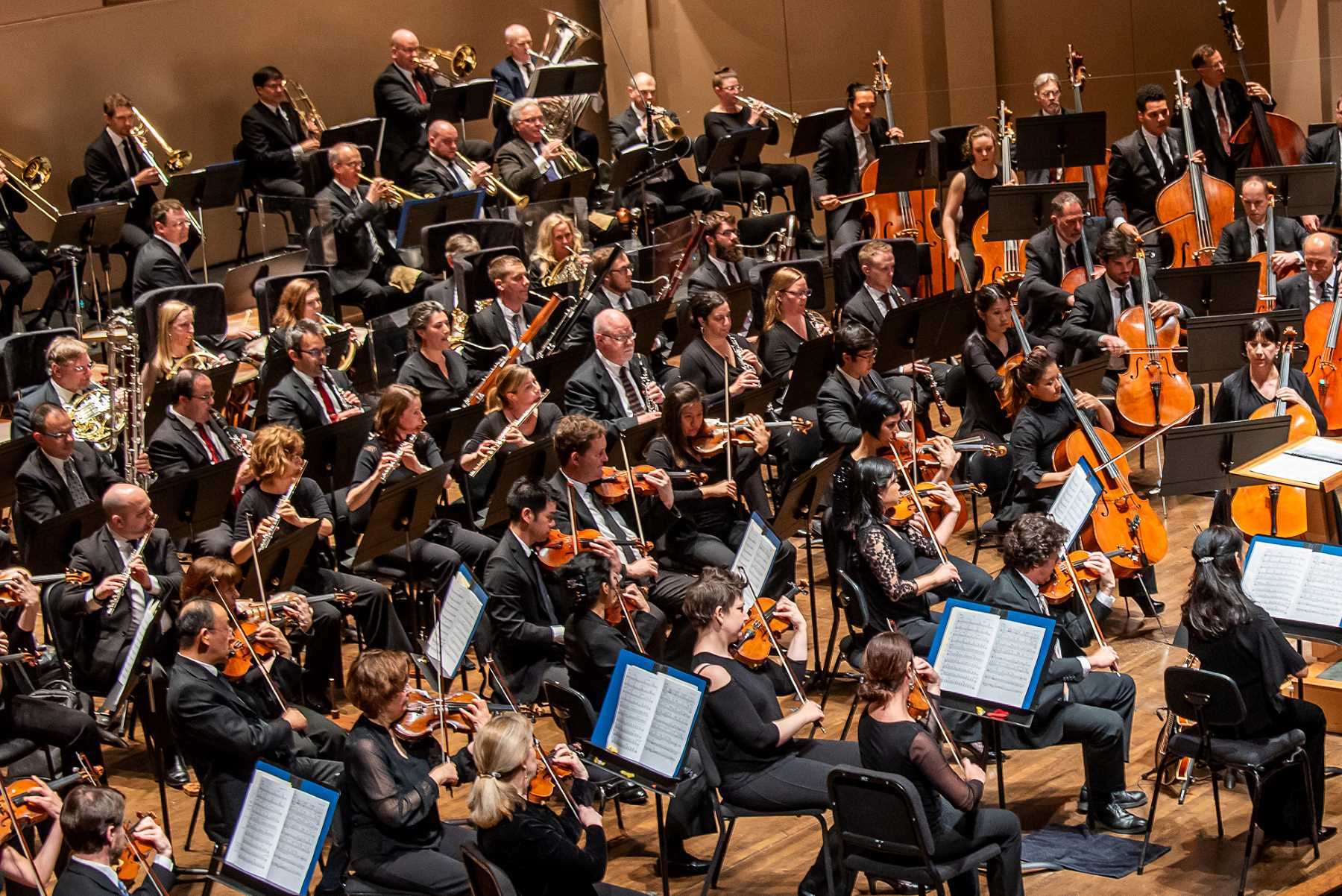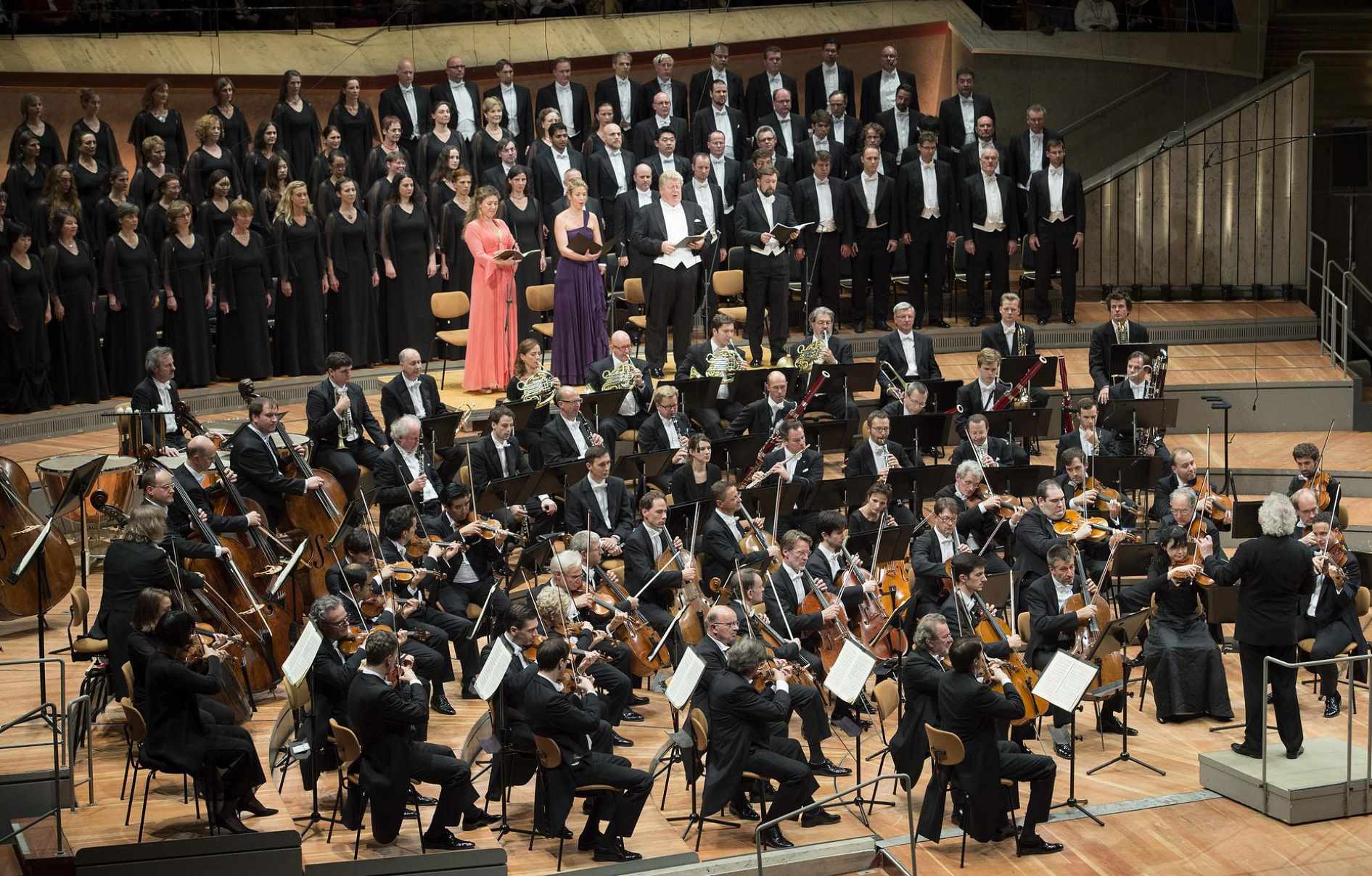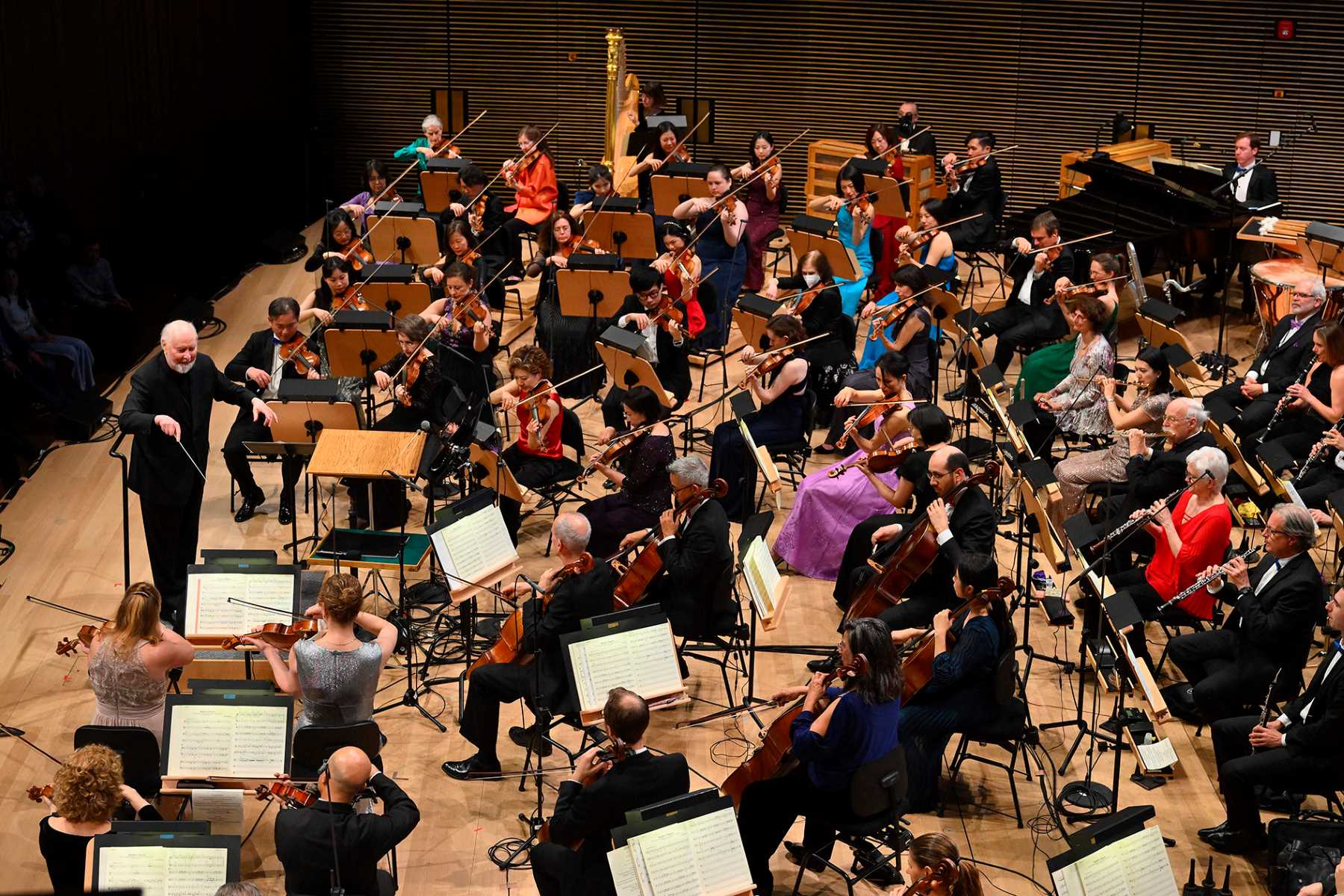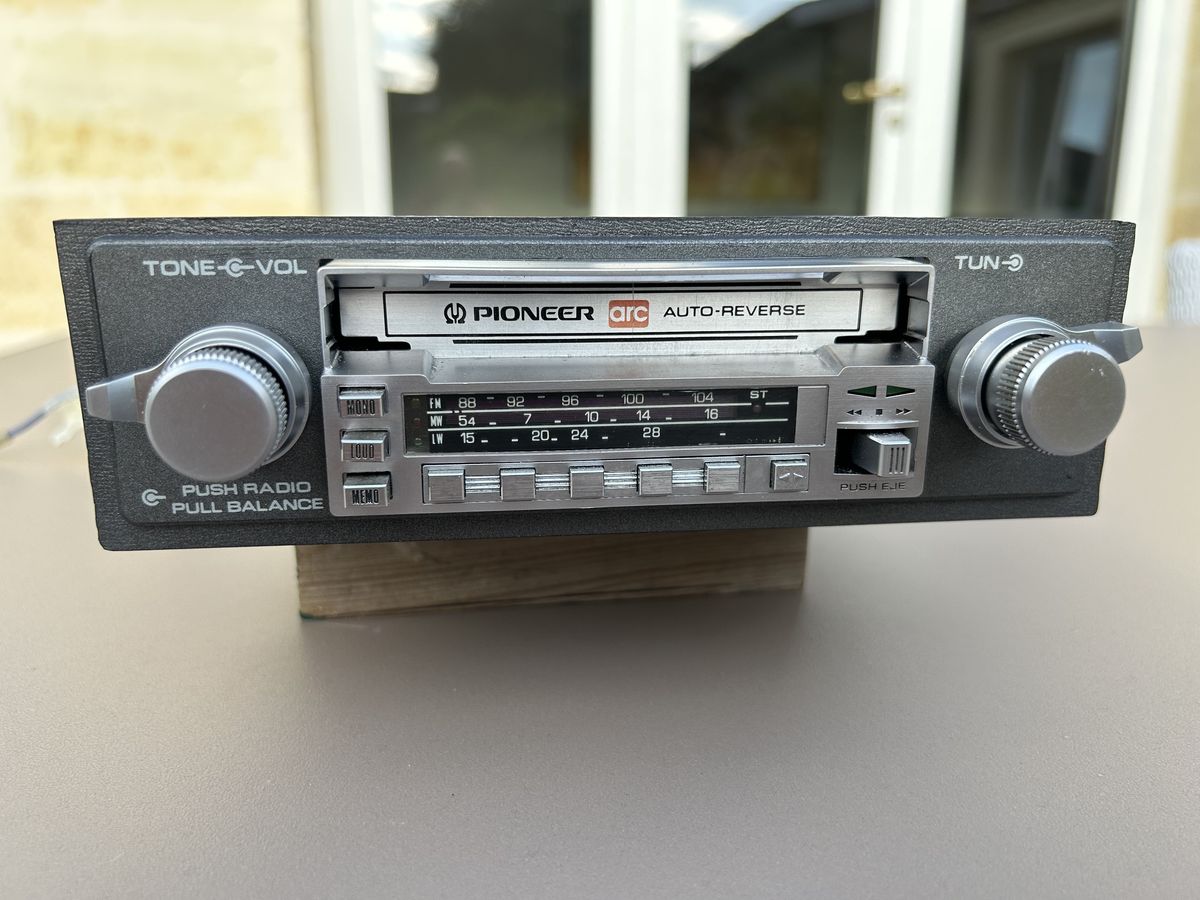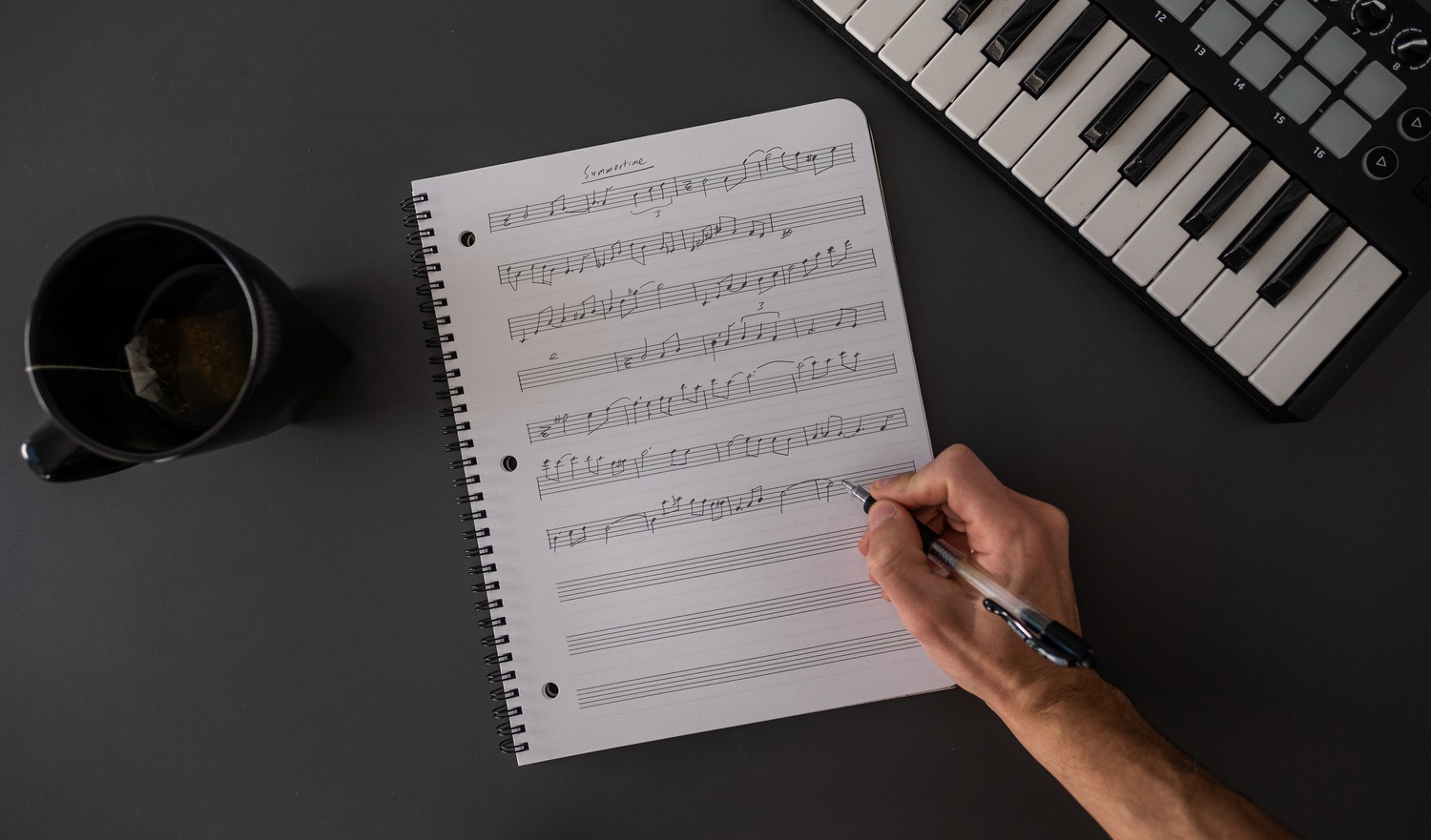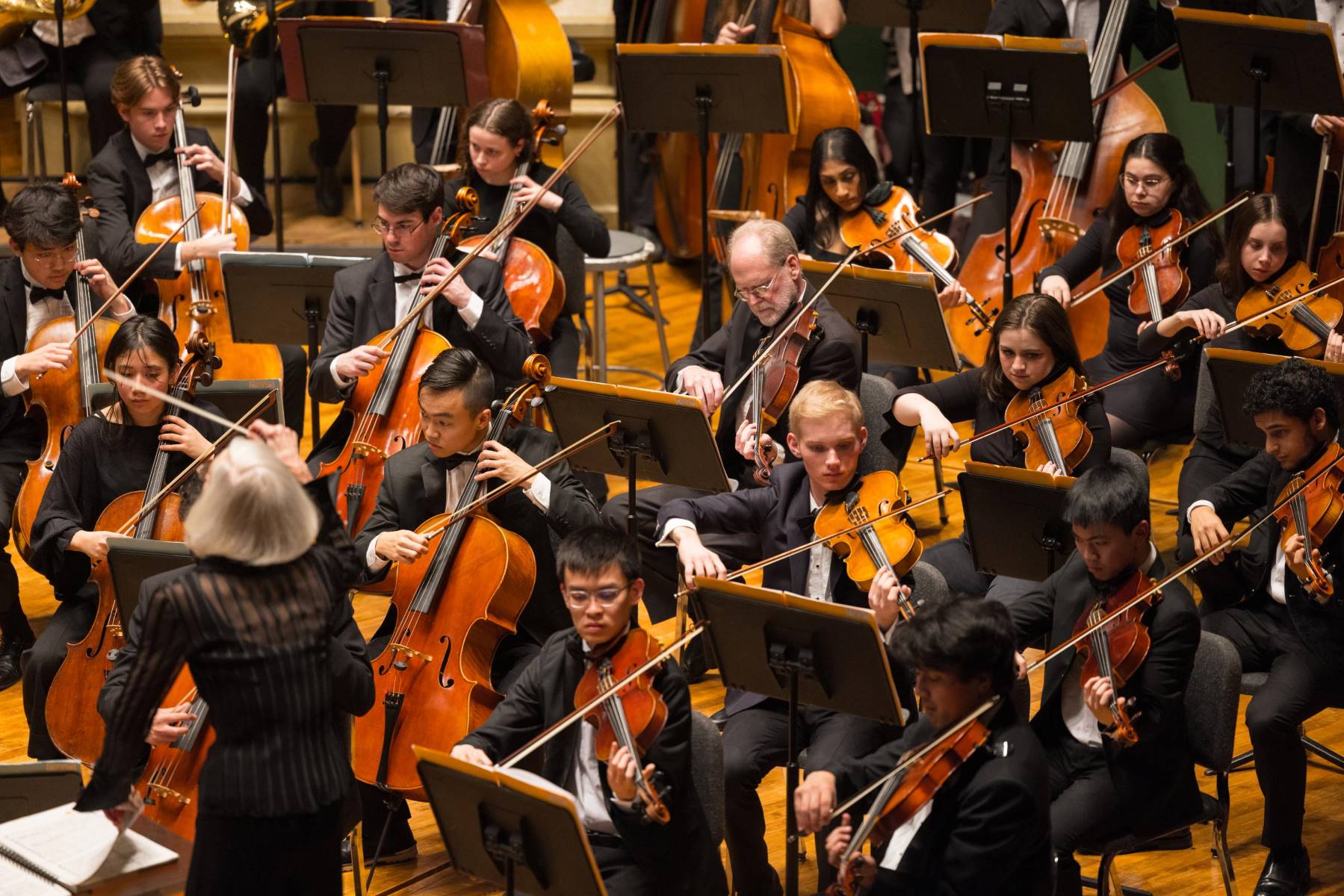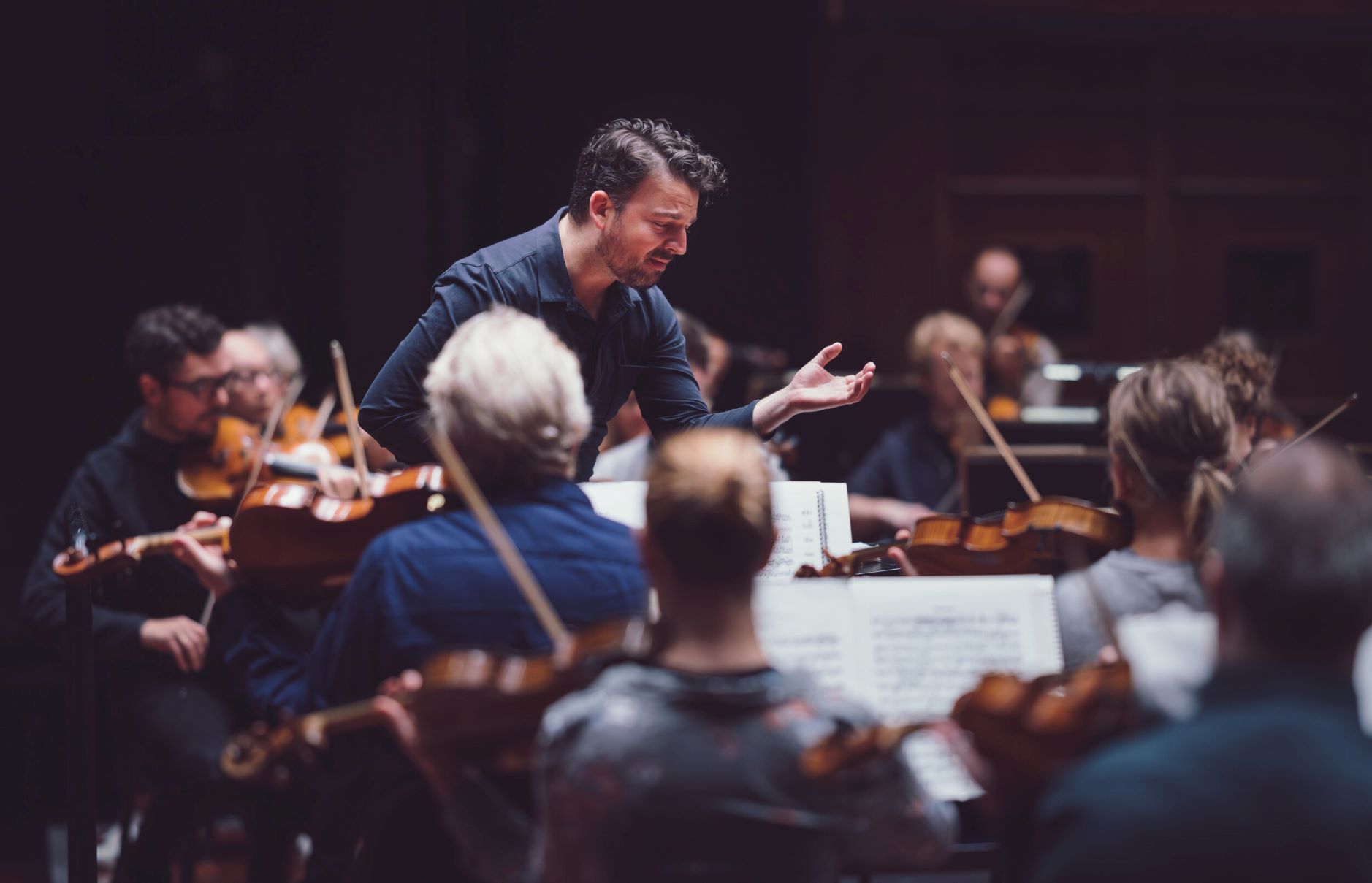

Symphony
What Is A Program Symphony
Published: January 16, 2024
Discover the beauty and power of a symphony program. Learn about the intricate composition and emotional journey that a symphony offers. Immerse yourself in the world of Symphony and experience the magic firsthand.
(Many of the links in this article redirect to a specific reviewed product. Your purchase of these products through affiliate links helps to generate commission for AudioLover.com, at no extra cost. Learn more)
Table of Contents
Introduction
A program symphony is a genre of orchestral music that tells a story or depicts a narrative through the use of musical themes and motifs. It is a form of symphony that goes beyond the traditional structure of instrumental music and offers a deeper emotional and intellectual experience to the listener.
The concept of a program symphony emerged during the Romantic era in the 19th century, as composers sought to break free from the constraints of classical forms and explore new avenues of artistic expression. By incorporating elements of storytelling, imagery, and programmatic ideas, they created musical compositions that were evocative, vivid, and immersive.
Unlike absolute music, which is purely instrumental and devoid of any specific narrative or program, a program symphony is composed with a specific concept or story in mind. This could be inspired by literature, nature, historical events, or even personal experiences. The composer uses the musical language to convey emotions, depict scenes, and transport the listener to different settings.
Program symphonies often feature recurring themes and motifs that represent characters, places, or ideas within the narrative. These musical elements create a sense of continuity and help to establish a coherent structure throughout the composition. Additionally, composers may incorporate various musical techniques such as leitmotifs, orchestral color, and thematic development to enhance the storytelling aspect of the symphony.
One of the key aspects of a program symphony is its ability to evoke vivid imagery and emotions in the listener. Through the use of musical techniques, composers can paint sonic landscapes, evoke powerful emotions, and create a sense of drama and tension. The symphony becomes a medium through which the listener can experience the story or concept being portrayed by the composer.
In the following sections, we will explore the origins of program symphony, its characteristics, famous examples, and its evolution and revival over time. Let us delve into the world of program symphonies and discover the rich and captivating musical journey they offer.
Definition of Program Symphony
A program symphony is a type of orchestral composition that incorporates a specific narrative, story, or concept into its musical structure. Unlike absolute music, which is purely instrumental and does not have any explicit program or storyline, a program symphony aims to evoke imagery and emotions through its musical themes and motifs.
The term “program” refers to a written description or outline of the narrative that the composer intends to convey through the symphony. This program can be inspired by various sources, such as literature, mythology, nature, historical events, or personal experiences. The composer then uses music as a means to express and communicate the essence of the program to the listener.
Program symphonies often consist of multiple movements, each representing different aspects or scenes of the narrative. The overall structure and progression of the symphony are carefully crafted to align with the dramatic arc of the program. This may involve the use of contrasting musical themes, changes in tempo and dynamics, and strategic placement of climactic moments to enhance the storytelling effect.
Within a program symphony, composers often utilize musical techniques such as leitmotifs, which are recurring themes associated with specific characters or ideas in the program. These leitmotifs act as musical signatures and help to create coherence and unity throughout the composition, as well as provide a means of character development or storytelling through music.
Program symphonies are typically performed by a symphony orchestra, which consists of various instruments organized into different sections, such as strings, woodwinds, brass, and percussion. The rich and diverse palette of sounds offered by the orchestra allows composers to create a wide range of musical textures and effects, further enhancing the expressive power of the program symphony.
In summary, a program symphony is a genre of orchestral music that integrates a specific narrative or concept into its musical structure. It aims to depict scenes, evoke emotions, and immerse the listener in a vivid and imaginative musical journey. Through careful composition and the use of various musical techniques, program symphonies offer a unique and captivating experience that combines the worlds of music and storytelling.
Origins of Program Symphony
The origins of the program symphony can be traced back to the Romantic era, a period in music history that was characterized by a strong emphasis on individual expression, emotional intensity, and exploration of new artistic forms. During this time, composers sought to break free from the constraints of classical forms and explore new avenues of musical storytelling.
One of the pioneers of the program symphony was Ludwig van Beethoven with his Symphony No. 6, also known as the “Pastoral Symphony.” Composed in 1808, the Pastoral Symphony was a groundbreaking work that depicted scenes of countryside life and conveyed a deep connection to nature. The symphony was accompanied by programmatic titles for each movement, such as “Awakening of cheerful feelings upon arrival in the countryside” and “Thunderstorm,” providing a clear narrative thread for the listener.
Another influential composer in the development of program symphonies was Hector Berlioz. His Symphony Fantastique, composed in 1830, was a radical departure from the traditional symphonic structure. It followed the story of an artist’s self-destructive passion for a woman and delved into themes of love, obsession, and hallucination. Berlioz’s use of recurring musical themes, orchestral color, and descriptive titles for each movement revolutionized the genre and had a profound impact on future composers.
The concept of the program symphony continued to evolve with the works of Richard Strauss, particularly his tone poem “Also sprach Zarathustra” (Thus Spoke Zarathustra), inspired by Friedrich Nietzsche’s philosophical novel. This symphonic poem, composed in 1896, aimed to capture the philosophical ideas and spiritual journey depicted in the novel.
Throughout the 19th and early 20th centuries, many composers embraced the program symphony as a means to engage their audiences on a deeper level. Franz Liszt, Peter Tchaikovsky, and Gustav Mahler were among the composers who produced notable program symphonies during this time, each exploring different themes, narratives, and emotional landscapes.
The emergence of technology, such as improved printing methods and the rise of concert halls, also played a significant role in the popularity and dissemination of program symphonies. Printed program booklets allowed audiences to follow the narrative or concept of the symphony while listening, enhancing their engagement and understanding of the music.
Overall, the origins of the program symphony can be attributed to the desire of Romantic-era composers to explore new forms of musical expression and convey narratives and concepts through their compositions. Their innovative approaches paved the way for future generations of composers to experiment with the boundaries of music and storytelling, leaving a lasting impact on the classical music repertoire.
Characteristics of Program Symphony
Program symphonies possess distinct characteristics that set them apart from other forms of orchestral music. These characteristics contribute to the immersive and narrative-driven nature of program symphonies, allowing composers to effectively convey their intended stories and concepts through music.
1. Narrative Structure: Program symphonies typically follow a narrative structure, often divided into multiple movements. Each movement represents different aspects or scenes of the story, creating a cohesive musical journey for the listener. The narrative structure allows composers to build tension, develop characters, and evoke emotions throughout the composition.
2. Programmatic Inspiration: Program symphonies are inspired by a specific program or concept, which can include literary works, historical events, nature, or personal experiences. Composers utilize musical techniques to capture the essence of the program and convey it to the listener. This programmatic inspiration gives the music depth and meaning beyond the purely instrumental aspects.
3. Recurring Themes and Motifs: Program symphonies often incorporate recurring themes and motifs that represent characters, places, or ideas within the narrative. These musical elements help to establish coherence and provide structure throughout the composition. They can serve as musical signatures, facilitating character development and enhancing the storytelling aspect of the symphony.
4. Orchestral Color and Texture: Program symphonies make use of the rich and diverse timbres of the symphony orchestra to create vivid musical landscapes. Composers employ various instrumental combinations, dynamics, and orchestration techniques to evoke specific moods and emotions. The blending and contrasting of different instrument groups contribute to the overall expressive power of the composition.
5. Descriptive Titles: Program symphonies often include descriptive titles for each movement, providing a glimpse into the narrative or concept of the piece. These titles offer guidance to the listener, enabling them to follow the story or imagery as the music unfolds. The descriptive titles act as signposts, helping to enhance the listener’s understanding and engagement with the composition.
6. Emotional and Imaginative Impact: A hallmark of program symphonies is their ability to evoke strong emotions and create vivid imagery in the listener’s mind. Through the use of musical techniques such as dynamics, tempo changes, thematic development, and orchestral color, composers elicit a range of emotions, transport the listener to different settings, and bring the story or concept to life through music.
Program symphonies offer a unique combination of music and storytelling, captivating audiences and stimulating their imagination. These characteristics contribute to the lasting appeal and enduring popularity of program symphonies throughout the history of classical music.
Famous Examples of Program Symphonies
Program symphonies have produced some of the most iconic and beloved works in the classical music repertoire. These compositions showcase the power of music in depicting narratives, evoking emotions, and captivating audiences. Here are a few famous examples of program symphonies:
1. Ludwig van Beethoven – Symphony No. 6, “Pastoral”: Composed in 1808, Beethoven’s Pastoral Symphony is a quintessential program symphony. It takes the listener on a journey through the beauty and tranquility of the countryside, depicting scenes such as the awakening of cheerful feelings upon arrival and a thunderstorm. Beethoven’s use of vivid musical imagery and descriptive titles make this symphony a beloved and enduring masterpiece.
2. Hector Berlioz – Symphony Fantastique: Berlioz’s Symphony Fantastique, composed in 1830, marked a groundbreaking development in program symphonies. It tells the tale of an artist’s unrequited love and subsequent descent into madness. Each movement represents a different scene of the artist’s vivid imagination, from a ballroom to the grave. Berlioz’s use of innovative orchestration and recurring musical themes established this symphony as a landmark of the genre.
3. Richard Strauss – Also sprach Zarathustra: Composed in 1896, Strauss’s tone poem “Also sprach Zarathustra” is based on Friedrich Nietzsche’s philosophical novel. It explores themes such as the eternal recurrence and the ascent of humanity. The powerful opening fanfare of this symphonic poem, famously used in Stanley Kubrick’s film 2001: A Space Odyssey, is instantly recognizable and has become synonymous with the search for understanding and enlightenment.
4. Peter Tchaikovsky – Symphony No. 6, “Pathétique”: Tchaikovsky’s Symphony No. 6, also known as the “Pathétique,” is a deeply emotional and personal program symphony. Composed in 1893, it reflects the composer’s emotional turmoil and struggles with his own mortality. The symphony follows a trajectory of intense emotion, with the final movement leaving listeners with a sense of profound sadness and longing.
5. Gustav Mahler – Symphony No. 1, “Titan”: Mahler’s Symphony No. 1, composed in 1888, embodies the essence of the program symphony. Inspired by the novel “Titan” by Jean Paul, the symphony takes listeners on a journey from the awakening of nature to a triumphant and exuberant finale. Mahler’s use of folk melodies, dramatic contrasts, and expansive orchestration creates a captivating and immersive musical experience.
These are just a few examples of the countless program symphonies that have left a lasting impact on the classical music world. Each of these compositions showcases the power of music to convey narratives, provoke emotions, and transport listeners to new imaginative realms.
Evolution and Revival of Program Symphony
The program symphony has undergone an interesting evolution throughout its history, experiencing periods of both popularity and decline. However, it has consistently proven to be a genre that captivates audiences and sparks the imagination of both composers and listeners.
During the late 19th and early 20th centuries, program symphonies reached their peak of popularity. Composers such as Richard Strauss, Gustav Mahler, and Jean Sibelius pushed the boundaries of orchestral storytelling with their remarkable symphonic works. Their compositions delved into deep psychological insights, philosophical concepts, and even political statements, further expanding the expressive possibilities of the program symphony.
However, with the advent of the 20th century and the rise of atonal and experimental music, the program symphony temporarily fell out of fashion. Composers began exploring new forms and techniques, moving away from narrative-driven compositions. The emphasis shifted towards abstract and mathematical approaches to composition, leaving little room for programmatic storytelling.
Nevertheless, the program symphony never truly disappeared. Composers like Dmitri Shostakovich and Sergei Prokofiev continued to compose symphonic works with programmatic elements, albeit in a more subtle and fragmented way. Their symphonies, while not explicitly programmatic, often conveyed deep emotions, societal commentaries, and personal narratives that resonated with audiences.
In recent years, there has been a revival of interest in the program symphony. Composers have once again embraced the power of narrative and storytelling in their orchestral works. This resurgence can be seen in the works of contemporary composers like John Adams, Thomas Adès, and Tan Dun. They incorporate diverse influences, ranging from literature and art to folklore and cultural heritage, creating compelling program symphonies that touch on relevant themes and resonate with modern audiences.
Furthermore, advancements in technology and multimedia have breathed new life into the program symphony. The integration of video projections, synchronized lighting, and other visual elements has enhanced the immersive experience of these symphonies, creating a multi-sensory journey for the audience.
The evolution and revival of the program symphony demonstrate its enduring appeal as a genre that combines music and storytelling. Composers continue to explore new ways of utilizing the symphony orchestra to convey narratives, evoke emotions, and engage listeners in exciting and thought-provoking musical journeys.
As we look to the future, it is evident that the program symphony will continue to evolve, adapt, and captivate audiences, offering a bridge between the rich tradition of classical music and the ever-changing world of artistic expression.
Conclusion
The program symphony is a genre of orchestral music that has captivated audiences for centuries. With its ability to merge music and storytelling, program symphonies offer a unique and immersive experience, taking listeners on a journey through narratives, emotions, and imaginary landscapes.
From the pioneering works of Beethoven and Berlioz to the modern compositions of contemporary composers, program symphonies have evolved, pushing the boundaries of musical expression. They have explored a wide range of themes, from nature and mythology to personal experiences and societal commentaries.
Characterized by narrative structure, recurring themes, and evocative orchestration, program symphonies have left an indelible mark on the classical music repertoire. They allow composers to convey complex emotions, provoke thought, and transport listeners to different worlds through the power of music.
The journey of the program symphony has seen periods of popularity and decline. However, with its enduring appeal and the recent revival of interest, the genre has continued to inspire composers and engage audiences. The incorporation of technology and multimedia has breathed new life into program symphonies, enhancing their immersive qualities and offering audiences a multi-sensory experience.
As we move forward, the program symphony will undoubtedly continue to evolve, adapt, and captivate listeners. Composers will explore new ways of using music to tell stories, provoke emotions, and connect with audiences on a deeper level.
Whether it’s the stirring melodies of Beethoven’s “Pastoral Symphony” or the imaginative landscapes of Richard Strauss’ tone poem, program symphonies have the power to transcend time and language, allowing us to experience the beauty of music and the limitless possibilities of human creativity.
So, let us immerse ourselves in the world of program symphonies, and let the music guide us on extraordinary journeys of the imagination that only the symphony orchestra can provide.

